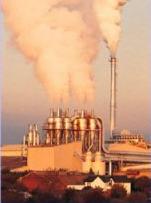
Photo from wikipedia
This work aims to implement a forecast model that, combined with the use of active instrumentation for a rather limited time, and with the knowledge of a set of data… Click to show full abstract
This work aims to implement a forecast model that, combined with the use of active instrumentation for a rather limited time, and with the knowledge of a set of data referring to the environmental parameters of the place to be monitored, can estimate the concentration of indoor radon activity for longer time periods. This model has been built through the MATLAB program, exploiting the theories of time series and, in particular, ARMAX models, to reproduce the variation in the concentration of radon activity. The model validation has been carried out by comparing real vs. simulated values. In addition, analytic treatment of input data, such as temperature, pressure, and relative humidity, can reduce the influence of sudden transients allowing for better stability of the model. The final goal is to estimate the annual radon activity concentration on the basis of spot measurements carried out by active instrumentation, such to avoid the need to measure for an entire calendar year by the use of passive detectors. The first experimental results obtained in conjunction with active radon measurement demonstrates the applicability of the method not only for forecasting future average concentrations, but also for optimizing remedial actions.
Journal Title: International Journal of Environmental Research and Public Health
Year Published: 2022
Link to full text (if available)
Share on Social Media: Sign Up to like & get
recommendations!